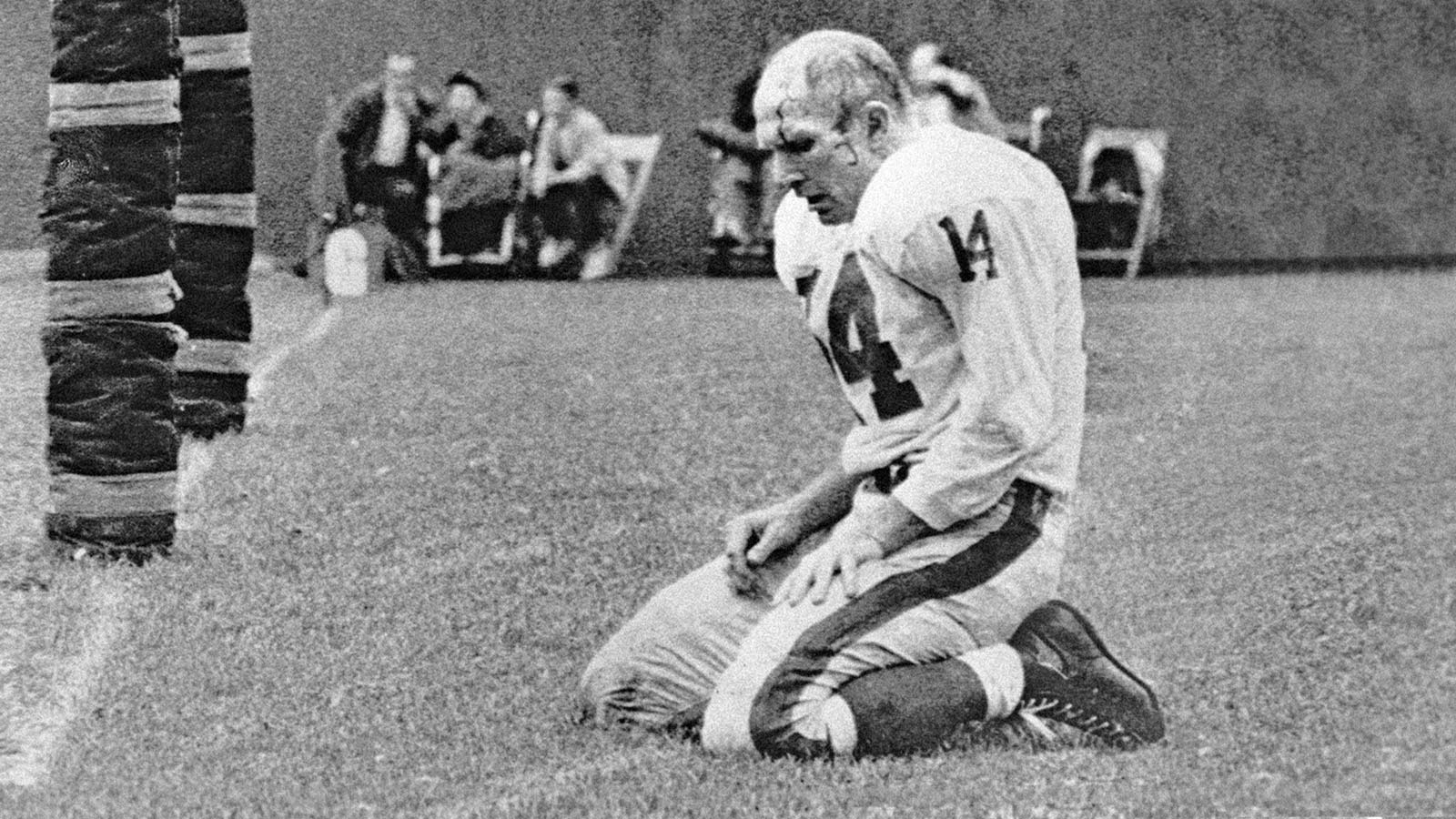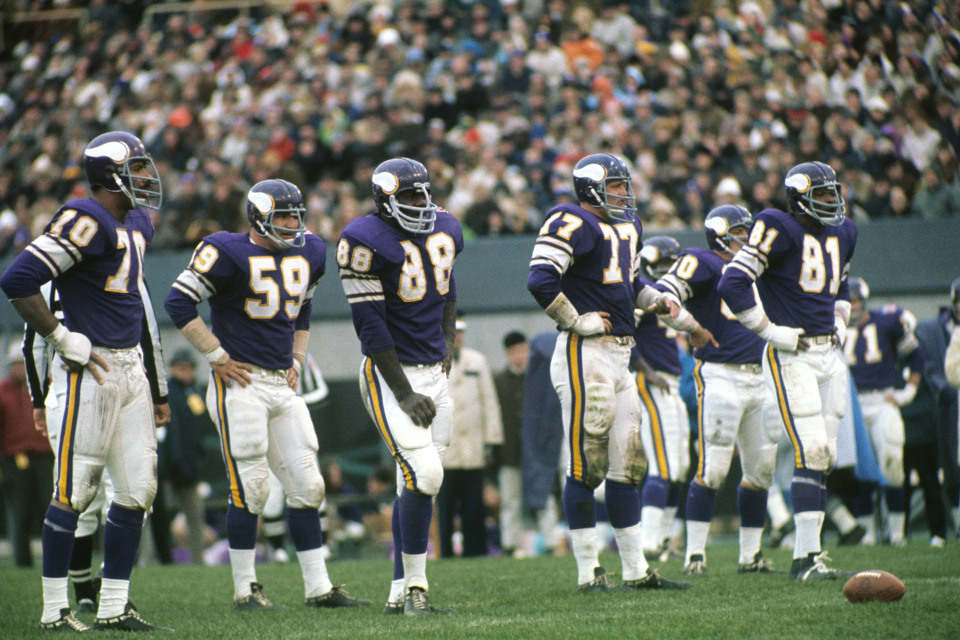Alan Ameche scores the winning TD in the "Greatest Game Ever Played":
This game is famous for several reasons:
The 1958 NFL Championship was the first NFL game to go into sudden-death overtime.
Pat Summerall was the Giants' Kicker. Tom Landry was their Defensive Coordinator. And this was Vince Lombardi's final game as their Offensive Coordinator. He joined the Packers the very next year.
The Colts' Head Coach was Weeb Ewbank. This was the first of three titles for him as a Head Coach. The Colts repeated the next year, and 10 years later he was the coach of Joe Namath's Jets when they won Super Bowl III, which is still considered to be the one of the biggest upsets in NFL history.
Raymond Berry caught 12 passes, a Championship record that stood for 55 years.
Unitas led the Colts on an 8 play, 73 yard drive in the final two minutes to send the game into overtime. The pace of the attack wore out the Giants defense. The Giants got the ball first in sudden death and went three and out. With the tired Giants defense back on the field the Colts decided to use their "two minute" offense once again, blistering down the field 80 yards in 13 plays, with Unitas calling every play from the field to shorten the time between snaps. These two drives coined the phrase "two minute offense", which has since been a staple in every team's playbook for decades.
This game, due to it's historic finish in front of a national audience, is credited with being the driving force behind the growth of the sport, leading to the birth of the AFL one year later as the public cried for more football.














